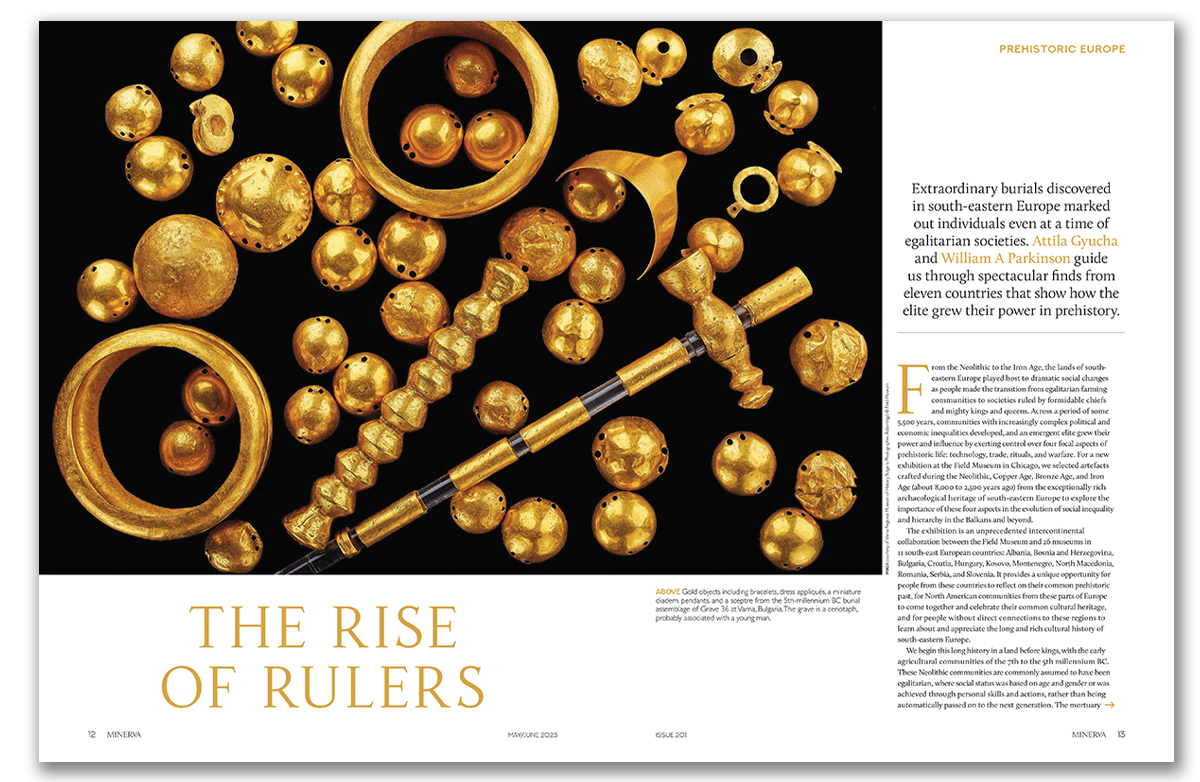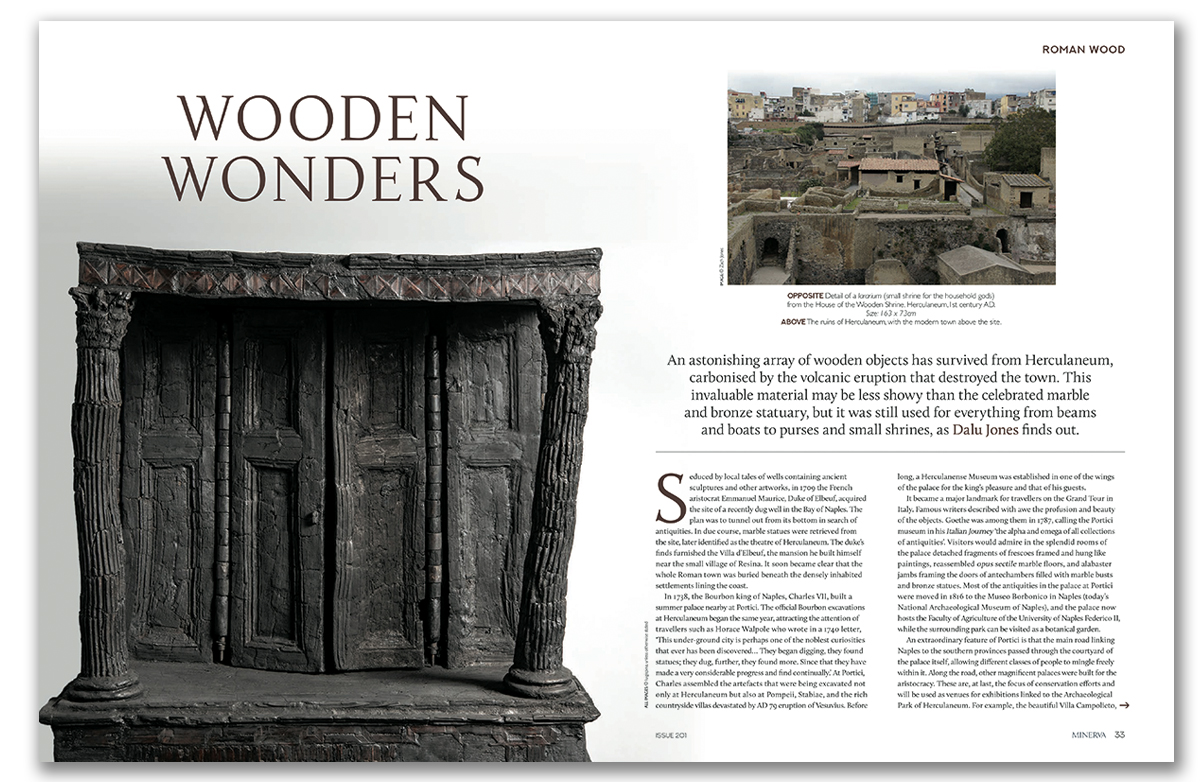Could the intriguing set of Neolithic figurines with chairs that grace our cover represent a pantheon of gods or members of a community? Both these interpretations have been suggested, and each highlights an important strand running through our first feature: ritual activity and community organisation. Attila Gyucha and William A Parkinson take us on a journey through some of the remarkable finds from hoards, cemeteries, and possible sanctuaries across south-east Europe that show how rulers grew their power around ritual, trade, warfare, and changing technologies, moving from the agricultural, egalitarian societies of the Neolithic to the elite warrior class of the Bronze and Iron Age.
Ancient Thrace was particularly rich in lavish burials, replete with the spectacular metalwork its elites valued. We return to Thrace elsewhere in this issue when we take a look at the Panagyurishte Treasure, found in Bulgaria, with Henry Bishop-Wright. This set of golden wine-drinking vessels combines ancient Greek and Persian form, function, and decoration – an eloquent example of the dynamic interplay that took place across the Mediterranean as motifs associated with power were adopted and adapted in high-end luxury goods.
Cultural fluidity can also be seen in mummies of Graeco-Roman period Egypt, with some featuring Greek inscriptions, Roman motifs in funerary paintings on wood, and pharaonic Egyptian imagery. We speak to Campbell Price, who argues that the costly funerary arts of gilded mummies and Fayum panel portraits enabled the deceased to become like the gods.
Wood is a rare survivor from antiquity, but Roman Herculaneum boasts many examples of wooden artefacts that offer an intimate look into the town’s domestic interiors, as Dalu Jones writes.
For our final feature, Jane Stevenson explores the art and architecture of medieval Siena. Aristocrats set up palaces with tall towers in this Tuscan city, but there was public spiritedness too, with great churches being built and adorned with paintings, and civic structures similarly furnished with rich allegorical frescoes that spoke back to Siena’s rulers.








